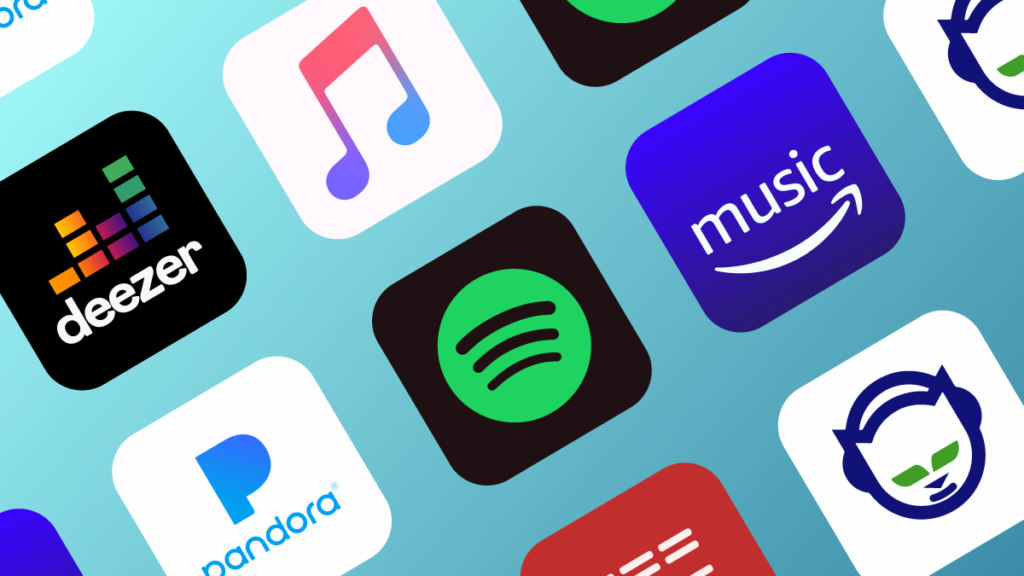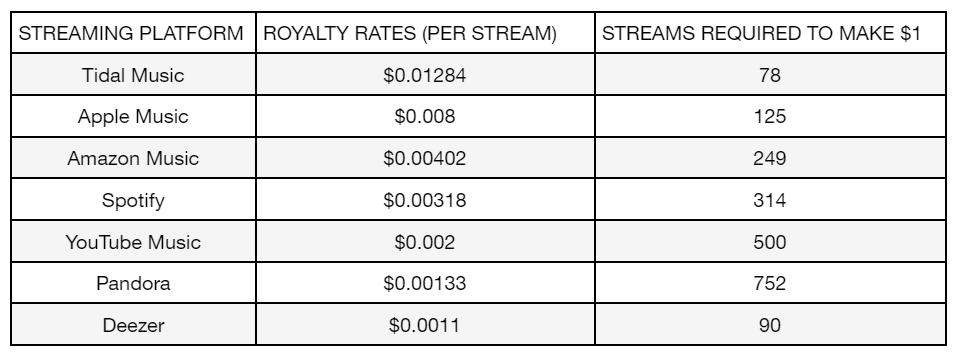
It’s no secret that the paid subscription model has completely taken over the world. Tiered subscription services have completely revolutionized the way we consume art as consumers, providing us with more music, more artists, more variety for a fraction of the original cost. When was the last time you bought an album outright – whether it was a CD in the early 2010s (RIP) or a digital copy? While subscriptions have made the consumption of music seemingly boundless, what happens to the actual creators, the suppliers of this service we consume? How has the streaming model replaced album sales – and which platforms are more lucrative for musicians these days?
With many streaming companies nowadays offering a free, ad-ridden experience to get listeners to buy into their service, the portion of revenue going to the musician is significantly smaller than what they’d earn from an album sale. Artists’ main sources of income include merchandise sales, paid appearances, and now streaming royalties. Naturally, to maximize the earning potential of streaming earnings, most artists will release their music on at least a handful of platforms. According to Sean Fitzjohn’s producerhive.com article, royalty rates for the top streaming services are:

However, even though one could calculate roughly what the royalty profits would be, rates are rarely paid as a flat rate. Artists often negotiate their terms and figures, the tier model can vary for different platforms, and streams can be more valuable in other countries.
In North America, Apple Music and Spotify are largely dominating the market. The former runs a pro-rated model, and Spotify is a “freemium”. Apple Music, while second to Spotify in number of subscribers, doesn’t just simply give $0.01 per stream to the artists, but rather it pays 52% of the platform’s ad revenue to music labels.
Spotify’s payment model, while simple for the consumer, have provided little detail on how artists earn their royalties. About 70% goes to the artist, while the company takes the rest. Factors that affect Spotify earnings include royalties from premium streams vs. free streams, localized pricing models (ex: the U.S. premium Spotify is $9.99/m while Indonesia is $3.99/m), and Pay-for-Play features (where artists and labels can pay to pick particular tracks to boost).
So what does it actually take to earn at least some money as an artist? What is the best platform?

Apple Music
This platform does not differentiate by label, meaning having a label or being independent does not impact an artists’ earning potential. Label or not, you’re earning the same 52% headline rate we mentioned before. Apple Music editorial playlists are also curated by “global tastemakers”, based on their preferences without eating more of the artists’ profit in exchange for a feature. Artists can either use their label to distribute their music, or independent artists can use an Apple preferred distributor.

Spotify
Just like Apple Music, Spotify also has their own distribution partners that serve their artist community. Labels can do the work for signed artists, while independent artists share their music with a Digital Service Provider (DSP) which will, in turn, distribute it to other platforms. Unlike Apple Music, Spotify’s payments are a little bit more nuanced. While their pay per stream is lower, the Spotify for Artists platform allows artists to get into editorial playlists, add fund-raising goals, bios, and other materials to their page, and articles and videos to support new artists in their efforts to promote and release new music. Spotify also has the largest subscriber base, so while the rate per stream is low, more people could theoretically, on average, listen to the same song.
But what about the platforms themselves? What keeps them afloat? And why can one pay double the rate of the other?
When you look at Apple Music’s 52% rate, that’s another way of saying about half of the revenue payout goes to the labels. In comparison, Spotify pays out about 70%, two-thirds of its revenue leaving its pockets.
Spotify’s free ad-supported tier is, according to them, a driver to their paid subscription tier, by preventing listeners from pirating songs directly – however, this generates less royalties for the artist and less revenue-per-listener. The bulk of the earnings on the free tier come from ad revenue. So when an artist receives royalties from a free listener, the funds come from Spotify’s ad revenue. On the other side, Spotify’s dealings with record labels often include stipulations like guaranteed minimums, which ultimately increases the payout % Spotify must make.
Apple Music does not require a free tier because Apple owns the distribution platform. While not limited to Apple products, there is an argument to be made about acquisition given that all products come with Apple Music pre-installed (since it is the default music app). This creates a natural onboarding of subscribers, even if Spotify can drive a wedge in their retention with the right marketing strategy. This lack of a free tier boosts Apple Music’s revenue per user, giving it more revenue from which to pay to artists.
Although Spotify pays out more of their earnings, a smaller % goes to the artists themselves. Apple Music, with a uniform royalty rate, managed a more attractive offer per stream for the artists.
Depending on your needs as an consumer, artist, label, or distributor, there isn’t a clear answer to the everlasting question of “which platform is better overall?”. While rates and pricing schemes continue to evolve, so will the potential earnings of artists.

